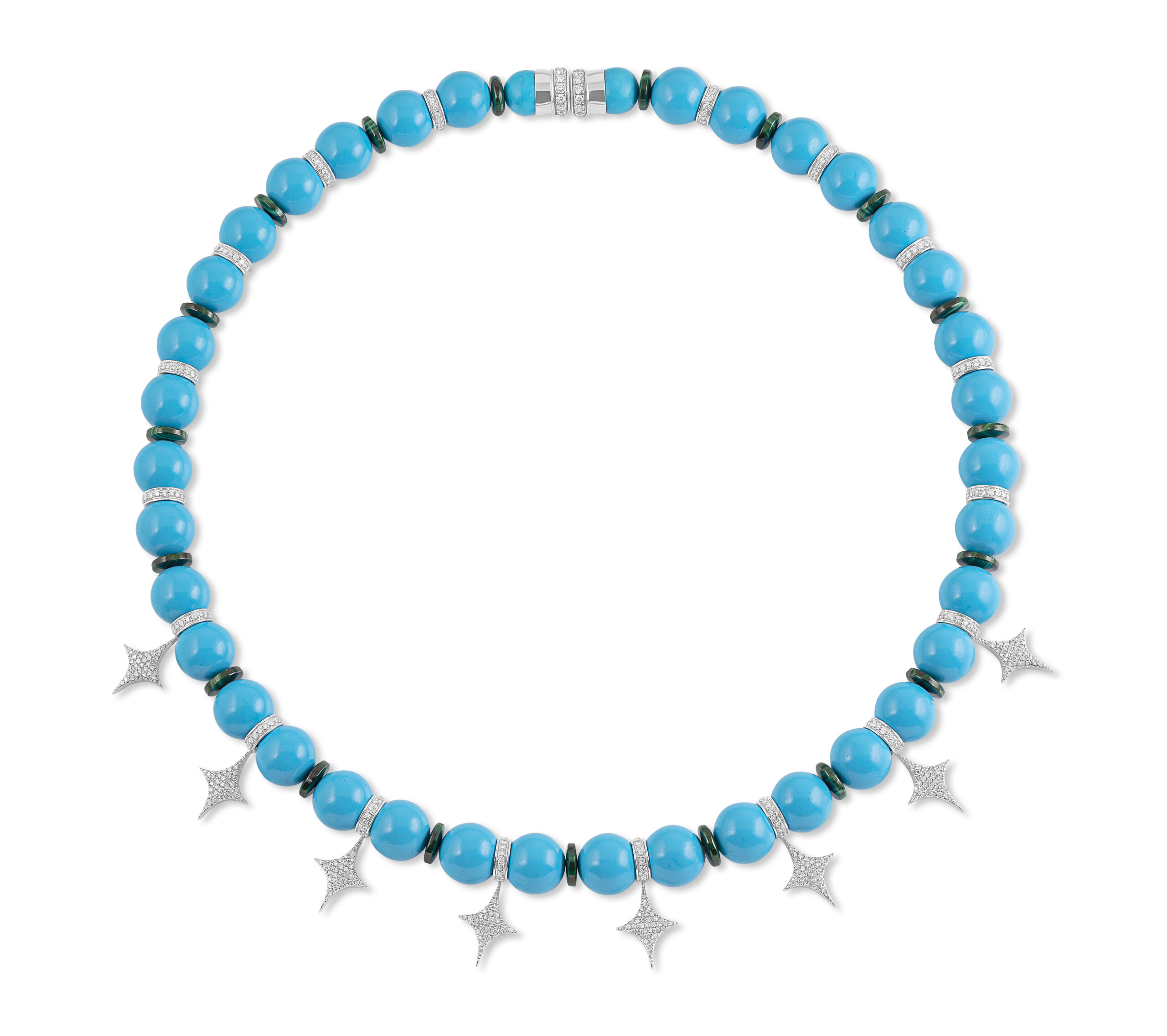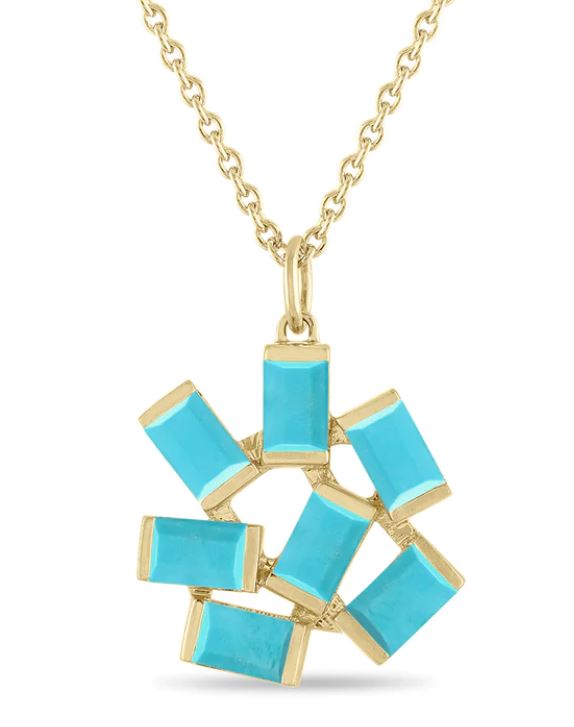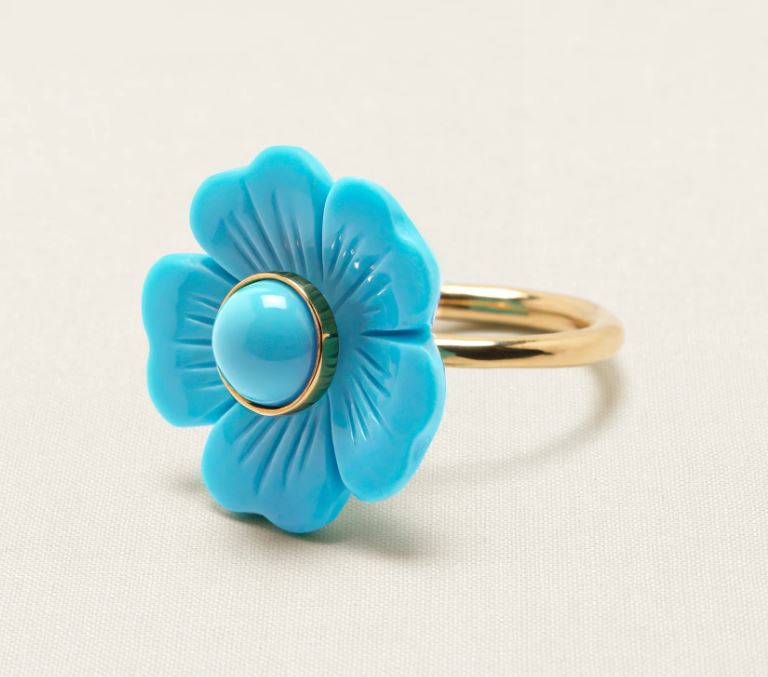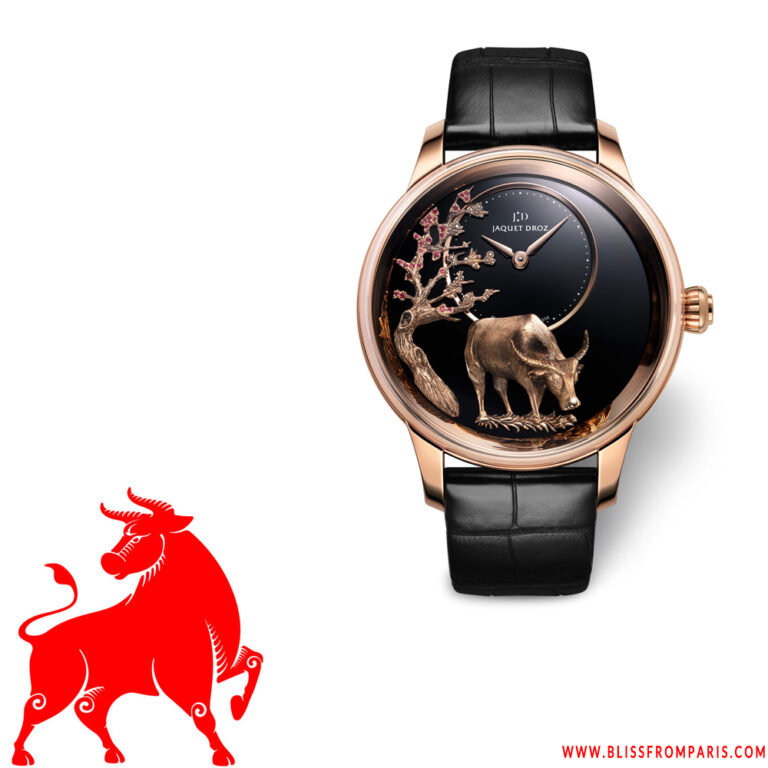Turquoise is the brithstone for December and the gem of the 11th anniversary. This captivating gem with a rich history and timeless beauty is found in only a few places on earth. Let’s embark on a journey to uncover the mystique of one of the world’s most ancient gems, exploring its origins, cultural significance, and why it has been cherished for centuries.

Turquoise is a hydrous phosphate mineral composed of copper and aluminum. The presence of copper gives turquoise its distinctive blue to greenish-blue color. This mineral from phosphate family comes in a range of colors, from sky blue to greenish-blue and even yellowish-green. The intensity and shade of color depend on the specific minerals present in the region where it forms. Notable mines in Arizona, New Mexico, and Nevada, such as the Sleeping Beauty Mine and Kingman Mine, produce high-quality turquoise. The Nishapur region in northeastern Iran has a rich history of producing prized Persian turquoise with intense blue hues. Mexico is known for producing turquoise with a variety of colors, including vibrant blues and greens. Turquoise is also found in other countries, including Egypt, China, Afghanistan, Australia, Chile, Israel, Tibet, and Russia.
On the Mohs scale of mineral hardness, turquoise typically ranks between 5 and 6. This places it on the softer side, making it more susceptible to scratching and abrasion. As a result, care is required when wearing and cleaning turquoise jewelry. Additionally, exposure to direct sunlight, heat, and chemicals should be minimized to preserve its color and integrity.


The name “turquoise” is derived from the French word “turquois,” meaning “Turkish.” The gemstone gained popularity in Europe during the Middle Ages, and it was believed to have been brought to the region from Turkey. The stone has been known by various names in different cultures. In Persian, it was called “firouzeh,” and in Arabic, it was known as “firuz” or “feroza.” These names are also associated with the color blue, emphasizing the characteristic hue of turquoise.

Turquoise has been cherished by various civilizations throughout history, and its significance goes beyond its aesthetic appeal. Native American cultures, particularly the Navajo and Pueblo tribes, considered turquoise a sacred stone. They believed it held protective properties, providing strength and good fortune to those who adorned themselves with it. In ancient Persia, turquoise was often used to decorate ceremonial masks, emphasizing its association with divine protection.

Beyond its cultural importance, turquoise has symbolic meaning in different traditions. It’s often associated with qualities like wisdom, tranquility, and protection. In many cultures, turquoise has been worn as a talisman to ward off negative energy and bring good fortune. The captivating color, reminiscent of clear skies and pristine waters, evokes a sense of calm and serenity, making it a sought-after gem for those seeking balance in their lives.
One of the reasons for turquoise’s enduring popularity is its versatility in jewelry design. Its distinctive color complements various metals, including silver and gold. Although turquoise is usually cut into beads and cabochons, it can also be carved. The stone’s ability to effortlessly blend with different styles makes it a favorite among jewelry designers seeking to create pieces that are both timeless and on-trend.

The demand for high-quality turquoise has led to the development of treatments and imitations, so buyers should be aware of the source and authenticity of the turquoise they are purchasing. Natural, untreated turquoise is generally more highly valued in the market.








